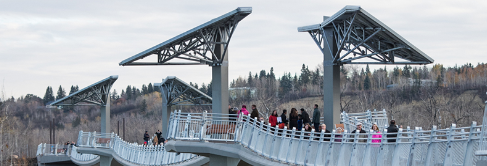When and Why you Should Replace your Bike Helmet
Replacing your bike helmet at the appropriate time is the key to protecting yourself when you ride. In fact, not replacing your bike helmet after significant wear or an impact can render it almost helpless at protecting your head from a fall.
Although there is no universal rule or moment in time where you have to replace your helmet; we think that using the following tips as a guideline to ensure your helmet is still offering the protection you need will help keep you riding safely.
Helmet Life at a Glance
As a rule, most companies and regulatory bodies recommend helmets that are worn frequently should be replaced every 3 to 5 years. The reasoning here is that the inner foam of the helmet that protects against impacts begins to degrade as a result of sun exposure, heat, sweat and other environmental factors. If your helmet is sitting unused in a closet for a couple of years, there is no need replace it immediately, but it is always important to remind yourself that just because a bike helmet looks and seems okay, doesn’t mean it is still providing adequate protection.
After an Impact or a Fall
There is one hard rule when it comes to helmets regardless of age, wear, or lifetime. If you crash while wearing your helmet, you should replace it immediately. This is because bike helmets are single-use safety devices. Once you compress the foam within the bike helmet’s plastic shell, it can no longer protect you from any further impact. Even if your helmet appears to be fine with no visible cracks, scuffs, or damage, it is still paramount that you replace it. Exterior appearance has no bearing on what has occurred within the bike helmet and how it has affected the protective properties. This holds true whether your helmet is 3 years old or you just bought it yesterday.
You Need a Good Fit
To truly protect you the way they are intended to, bike helmet's must fit your head. If pieces of your helmet wear or breakdown over time and begin to affect the fit, you are no longer going to be protecting at the maximum level.
Some key areas to monitor here are the chin strap, buckles, and adjustment pieces at the rear of the helmet. Basically, if you can’t tighten a strap or a fastener because the adjusters have broken, or if the chin strap is flailing around loosely because a piece has broken off, the helmet is going to do a sub-par job at best of protecting you.
If any part of the retention system is worn out, such as the dial doesn’t ratchet, the foam inserts have lost their loft, or you find any issues that prevent you from keeping the helmet from moving around on your head, it's time to replace that helmet. At the end of the day helmet can work properly only if it fits and stays in place.
Now you Know - Time to Evaluate your Bike Helmet!
Now that you know a few of these basic rules of thumb, evaluate your helmet. If you have any of the following, it’s time to consider replacing your bike helmet:- You purchased it over 3 years ago
- If the helmet no longer fits snug
- If any parts of the helmet are broken or working incorrectly
- If you have been in a crash
Still have questions? Drop by our Edmonton store today or send us a message online. One of our experienced bike experts will gladly assist you and get you into the best bike helmet for your needs!







